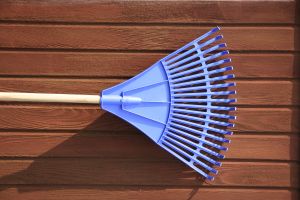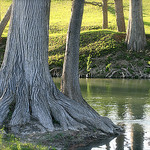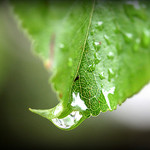 Here in Nashville, there are a lot of trees. Old, broad, tall trees with a lot of leaves. Though leaves are beautiful, when they eventually fall to the ground they can cover your lawn so densely that you might not see any grass at all. In the quest to get rid of leaves and save lawns, there are a few options.
Here in Nashville, there are a lot of trees. Old, broad, tall trees with a lot of leaves. Though leaves are beautiful, when they eventually fall to the ground they can cover your lawn so densely that you might not see any grass at all. In the quest to get rid of leaves and save lawns, there are a few options.
1. Raking
Raking leaves while they are dry is an effective way to get leaves into piles. The biggest advantage to raking is that it’s cheap. Rakes are inexpensive and effective. Wholesale stores like Costco or Sam’s Club, as well as grocery stores sell compost bags specifically designed for leaves. These compost bags run from $.35 a bag if you buy in bulk, to $2.50 per individual bag. The bags can then be taken to compost centers for further use. The downside to the raking method is time. It can take a while to get leaves raked into piles and placed into compost bags. Remember, if you use this method, always wear gloves to protect from injury.
2. Leaf blowing
Leaf blowers are an effective and time efficient way to get leaves into piles. When looking for a leaf blower, there a few key things to look at:
- Electric or Gas Powered
- Overall Engine Power in MPH
- Mulching Kit Component
There are advantages to owning electric and gas powered leaf blowers. Most leaf blowers on the market tend to be electric, so a quality extension cord should also be purchased. Typical engine speeds range from approximately 150 mph to 260 mph, depending on the make and model.
3. Mulching
Many leaf blowers have a mulching kit attachment available. Mulching leaves into compost is the most efficient way to eliminate leaves from a lawn. Many leaf blowers have suction speeds ranging from 180 mph to 220 mph. It’s important to look at blade types as well, as metal blades will last longer than plastic blades. Another consideration is if the mulching kit has a bag attachment or a plastic hose attachment. If your property has a lot of twigs and acorns, you should consider going with a leaf blower/mulching kit that has a rubber or plastic hose attachment rather than just a bag attachment. Twigs can be sharp and often rip through bag attachments, meaning repeat purchases of mulching attachment bags are necessary. Once you fill up a mulching bag or can, simply put the compost into compost bags and take them to your local compost center.
However you choose to get rid of your leaves this fall, just remember to be careful and exercise a “safety first” mentality. For more tips on leaves and all things trees, please feel free to contact us today!

 It’s a beautiful time of year. The air is cool and crisp. Comfy, beautiful sweaters are making their way from the back of the closet. And leaves are changing colors all over the country. Beautiful shades of red, orange and yellow take the place of vibrant spring greens.
It’s a beautiful time of year. The air is cool and crisp. Comfy, beautiful sweaters are making their way from the back of the closet. And leaves are changing colors all over the country. Beautiful shades of red, orange and yellow take the place of vibrant spring greens. As the leaves begin to change colors and the winds shift and become cooler, that can only mean one thing: It’s time to plant!
As the leaves begin to change colors and the winds shift and become cooler, that can only mean one thing: It’s time to plant! We see it all too often: Trees are added to landscape and then forgotten about. Sure, they get water with the rest of the yard. But when was the last time you maintained your trees from the top down? Here are 4 ways to know when you’re trees need to be trimmed:
We see it all too often: Trees are added to landscape and then forgotten about. Sure, they get water with the rest of the yard. But when was the last time you maintained your trees from the top down? Here are 4 ways to know when you’re trees need to be trimmed: It’s hard a balance to strike sometimes: Watering your trees and landscaping while utilizing resources responsibly. With the summertime heat and drought restrictions in place for watering in many cities across the country, providing your plants with enough of the wet stuff can be a challenge.
It’s hard a balance to strike sometimes: Watering your trees and landscaping while utilizing resources responsibly. With the summertime heat and drought restrictions in place for watering in many cities across the country, providing your plants with enough of the wet stuff can be a challenge.